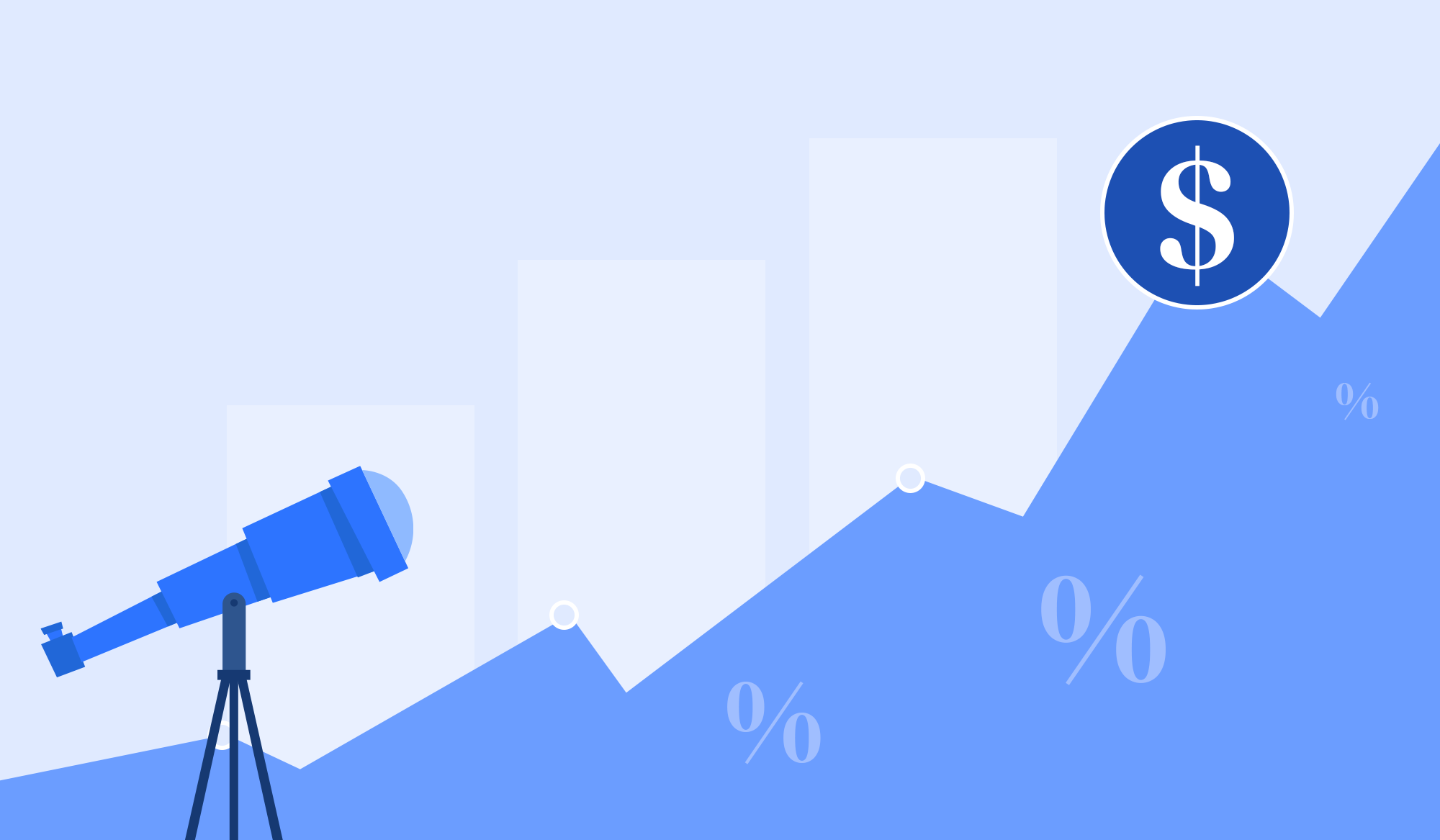Resource Management Software | Employee Performance Tracking Software
Blog
Revenue Forecasting in 2025: How AI is Helping Businesses Predict Growth with Precision

In today’s competitive landscape, businesses can no longer rely on reactive decision-making or backward-looking financial models. With the economy moving at digital speed, the ability to accurately forecast revenue is no longer a luxury—it’s a strategic necessity. As we enter 2025, revenue forecasting is undergoing a transformative shift, fueled by artificial intelligence (AI), data analytics, and automation.
What was once a quarterly guessing game based on spreadsheets and historical data is now evolving into a continuous, intelligent, and predictive process. AI is not just enhancing forecasting accuracy—it’s redefining how businesses plan, allocate resources, manage risks, and identify new opportunities.
This blog explores how AI is reshaping revenue forecasting in 2025 and how platforms like Clousys are enabling businesses to forecast with unmatched clarity and control.
The Shift from Traditional Forecasting to AI-Driven Models
Traditional revenue forecasting relies heavily on static data, past performance, and assumptions built on averages. While useful for high-level trends, these models often fail to capture real-time shifts in demand, market conditions, or operational inefficiencies.
AI-powered forecasting, on the other hand, uses real-time data, machine learning algorithms, and predictive analytics to create dynamic forecasts that adapt as new information becomes available. These models learn continuously, detect patterns, and adjust forecasts based on historical performance, seasonal trends, resource utilization, pipeline status, and external market variables.
In short, AI enables businesses to move from gut-based planning to data-driven foresight.
Why Revenue Forecasting Matters More Than Ever in 2025
- Economic Uncertainty: Volatile markets require agile financial planning. Organizations need flexible models that can accommodate rapid changes in demand, customer behavior, or supply chain constraints.
- Customer Expectations: Clients expect faster turnaround times, transparent pricing, and reliable service delivery. Accurate forecasting allows businesses to commit confidently and deliver without overpromising.
- Resource Optimization: Whether it’s allocating teams, managing workloads, or planning hiring needs, knowing what revenue is coming helps ensure resources are used wisely and not spread thin.
- Strategic Growth Planning: From new market entry to product launches, reliable revenue projections give leadership teams the insights needed to invest boldly, without compromising financial stability.
- Cash Flow and Liquidity Management: Real-time visibility into incoming revenue helps finance leaders manage expenses, plan investments, and maintain healthy working capital.
How AI Enhances Revenue Forecasting
1. Real-Time Data Integration
AI systems aggregate data from multiple internal sources—sales pipelines, project management tools, timesheets, invoices, CRM platforms, and finance systems. This provides a real-time snapshot of actual and projected income, rather than relying on static snapshots that are already outdated by the time they’re analyzed.
Clousys centralizes data from across departments—ATS, HRMS, Resource Management, Project Management, and Invoicing—so businesses can forecast revenue based on live resource utilization, billing cycles, and project progression.
2. Predictive Modeling and Machine Learning
AI tools analyze historical trends and current inputs to project future outcomes with high accuracy. For example, if a project consistently overruns budget or a client tends to pay late, the model adjusts revenue projections accordingly.
Clousys uses intelligent forecasting engines that analyze approved timesheets, billable hours, and resource schedules to provide monthly, quarterly, and annual revenue forecasts segmented by business unit, project, or even individual resources.
3. Scenario Planning and Risk Detection
AI doesn’t just tell you what might happen—it helps you explore multiple what-if scenarios. Businesses can model different outcomes based on variables like client delays, employee availability, or cost fluctuations.
With Clousys, organizations can simulate revenue projections under various assumptions—such as reduced resource availability, new client acquisition, or shifting timelines—helping leaders prepare for both risks and opportunities.
4. Improved Collaboration Across Teams
Accurate forecasting isn’t just a finance function—it requires input from HR, operations, sales, and project management. AI platforms like Clousys create cross-functional visibility, allowing all departments to access and act on the same real-time data.
For example, when resource allocation changes in the RMS, or a project milestone is adjusted in PMS, the system automatically recalculates revenue forecasts—ensuring leadership is always working with the latest information.
The Role of Clousys in Revenue Forecasting
Clousys has reimagined revenue forecasting as an integrated part of the business workflow rather than a separate financial exercise. Here’s how:
End-to-End Data Integration
Because Clousys offers a unified platform that combines HRMS, ATS, Resource Management, Project Management, Timesheets, and Invoicing, every data point needed for forecasting is already available in one place. This eliminates manual data collection and minimizes the risk of errors or inconsistencies.
Automated Invoicing Tied to Timesheets
Once timesheets are approved within the Clousys system, they are directly linked to the invoicing module. This provides a clear picture of what has been billed, what is pending, and what revenue is expected—down to the resource level.
Business Unit and Project-Level Forecasting
Clousys allows businesses to view revenue projections by project, business unit, or client. This enables more granular financial planning, helping companies identify high-performing areas and optimize underutilized segments.
Predictive Analytics and Dashboard Insights
Clousys dashboards present revenue forecasts visually, supported by key performance indicators, historical trends, and workload insights. Leaders can drill down into the data to understand the “why” behind every number and adjust plans accordingly.
Key Benefits of AI-Driven Forecasting with Clousys
- Accuracy: Reduced guesswork and human bias, replaced with data-backed predictions.
- Speed: Faster turnaround for revenue reports and forecasts.
- Scalability: Ready to handle growing operations without adding manual workload.
- Agility: Ability to adjust forecasts quickly as business conditions evolve.
- Confidence: Empowered leadership that can plan ahead with clarity and conviction.
Preparing Your Business for the Future
The future of revenue forecasting lies in connected intelligence. Businesses that continue relying on outdated, disconnected systems risk falling behind. Those that embrace AI-driven forecasting gain not just a financial tool—but a strategic advantage.
By implementing a platform like Clousys, organizations are not only improving the accuracy of their revenue projections but also transforming the way they manage resources, make decisions, and grow sustainably.
Conclusion
In 2025 and beyond, growth will favor those who can see clearly, plan strategically, and act confidently. AI-powered revenue forecasting is no longer a forward-thinking concept—it’s an operational imperative. As businesses become more complex and interdependent, solutions like Clousys are making it easier than ever to unify operations and forecast with precision.
If your business is ready to move beyond static spreadsheets and into the era of intelligent forecasting, now is the time to explore how Clousys can make that transformation seamless and scalable.

